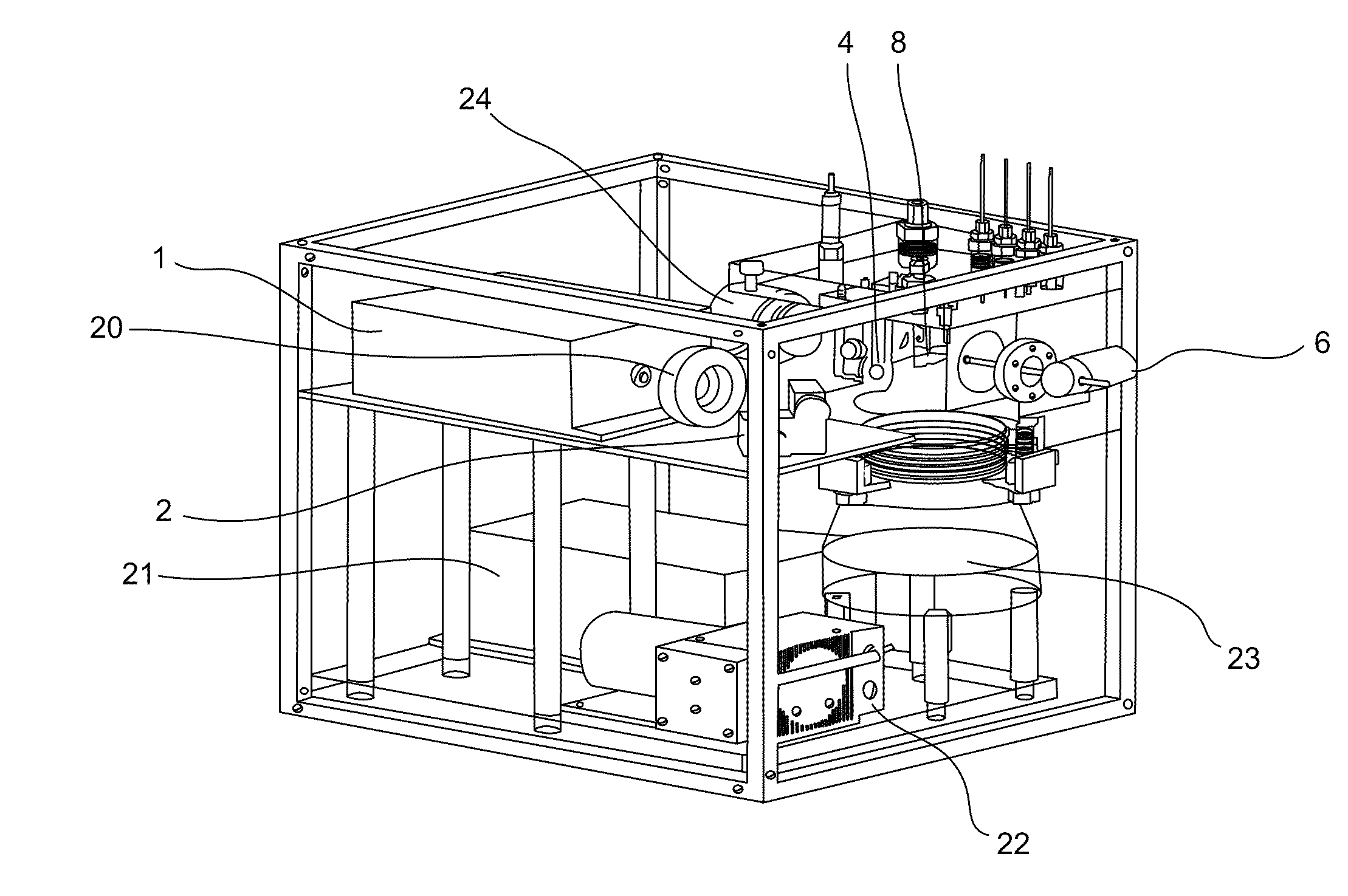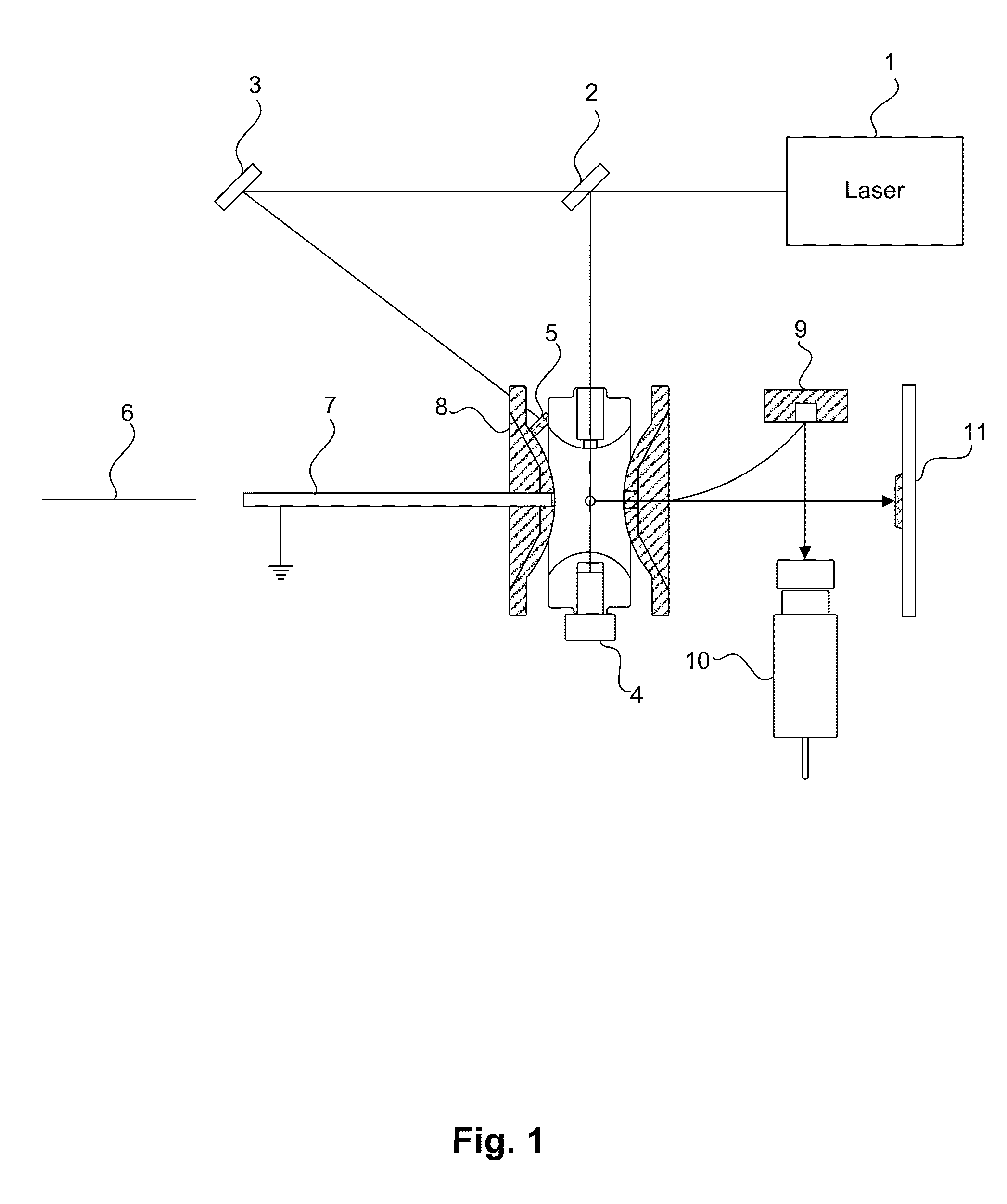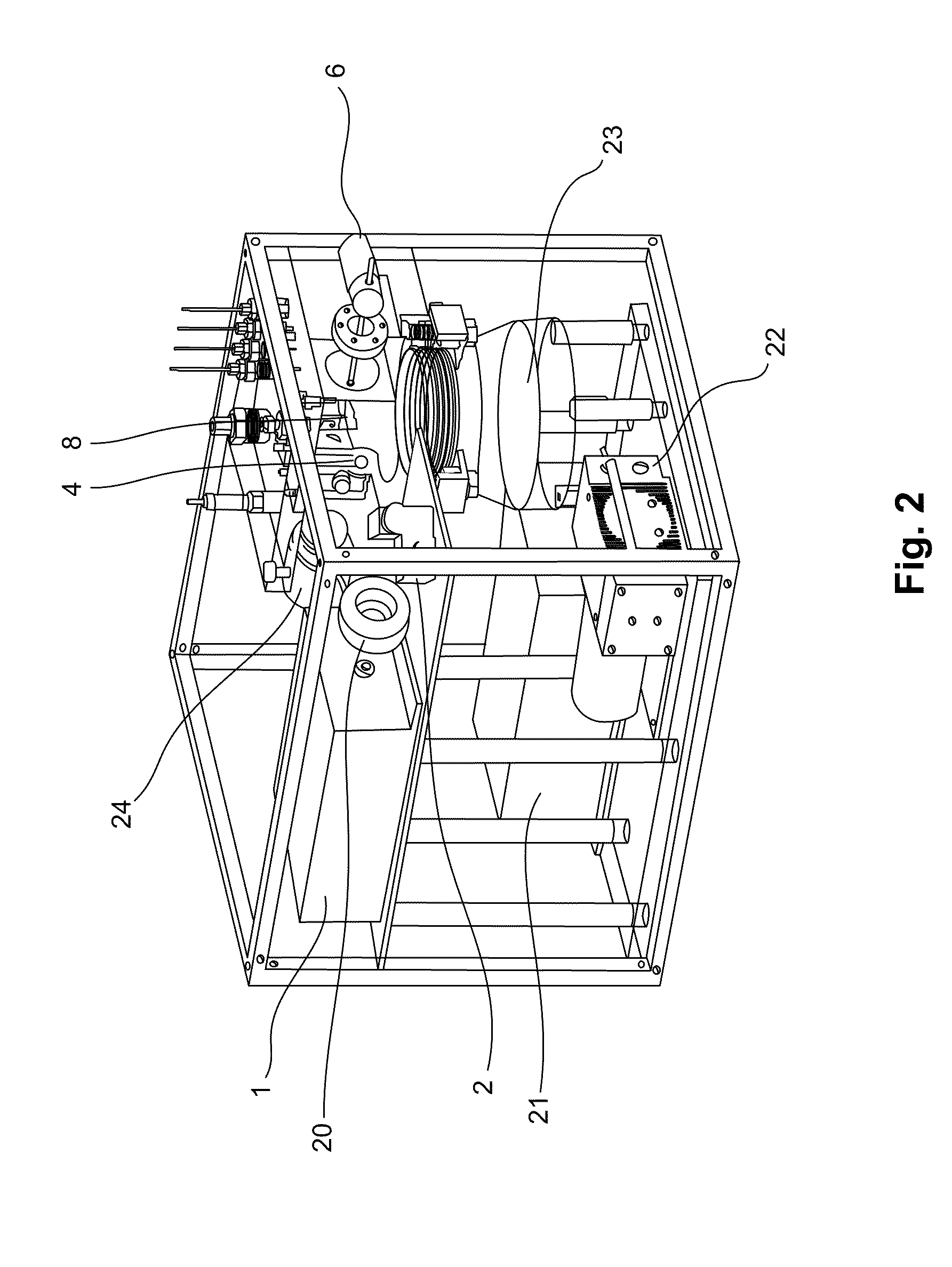Apparatuses and methods for portable mass spectrometry
a portable, mass spectrometry technology, applied in the field of mass spectrometry, can solve the problems of limited ability to analyze macromolecules without hard vacuum (e.g., 10sup>5 /sup>torr) and serious limitations of instruments
- Summary
- Abstract
- Description
- Claims
- Application Information
AI Technical Summary
Benefits of technology
Problems solved by technology
Method used
Image
Examples
example 1
Construction of a Portable Mass Spectrometer
[0186]A portable mass spectrometer was constructed using synthetic poly(methyl methacrylate) materials for the vacuum chamber. The instrument contained a KNF diaphragm pump and an Alcatel turbo molecular pump to provide vacuum. All components of the instrument were contained within a casing of length 30 cm, height 28 cm, and width 25 cm. The total mass of the instrument was about 16 kg. This mass spectrometer could measure m / z ratios ranging from about 500 to about two million. The apparatus comprised an ion trap with dimensions of r0=10 mm and z0=7.07 mm. A schematic design showing components of the instrument is shown in FIG. 1, except that the instrument did not contain the mirror 3 or the LIAD plate 5. The apparatus was powered using a wall socket.
[0187]Two DC power supplies (Matsusada Precision Inc., model S3-25N and S3-25P) provided ±25 kV to a conversion dynode. Another DC power supply (Matsusada Precision Inc., model S1-5N) supplie...
example 2
MALDI with the Portable Mass Spectrometer
[0193]Five femtomoles, 100 femtomoles, or 100 picomoles of angiotensin were placed on the MALDI sample plate of the portable mass spectrometer, and a 2,5-dihydroxybenzoic acid matrix was used. Desorption-ionization was achieved using 20 laser pulses, and the analyte was introduced to the quadrupole ion trap mass analyzer, which had an internal pressure of 2 mTorr. MALDI mass spectra obtained by frequency scanning using each of these amounts of angiotensin are shown in FIG. 4 ((a) 5 fmole; (b) 100 fmole; (c) 100 pmole). In each mass spectrum, the principal peak was protonated angiotensin. The lowest quantity of angiotensin detectable using the portable mass spectrometer was 5 fmole (FIG. 4(a)).
example 3
ESI with the Portable Mass Spectrometer
[0194]Pulsed-mode atmospheric ESI was performed separately with insulin, angiotensin, cytochrome c, and myoglobin, each at a concentration of 10−5 M in 45% methanol / 45% water / 10% acetic acid. To perform electrospray ionization, a 30 μm picotip emitter was used together with a KDS-100 syringe pump. Sample was introduced into this source using a 100-μl Hamilton syringe. The syringe flow rate was 60 μl / h, the emitter voltage was 2.5 kV, and the ion introduction time was 5 s. A 127-μm-i.d. stainless steel capillary inlet coupled with a 2-way normally closed pinch valve were controlled by a pulsed function generator; the pinch valve opened upon a 24 V DC signal. The pinch valve and capillary were connected using a 1 / 16″ i.d. silicon tube. The internal pressure of the quadrupole ion trap mass analyzer was reduced to 0.8 mTorr after sample introduction. A frequency scan was performed from 300 to 100 kHz in a scan time of 1 s. The ESI mass spectra of a...
PUM
 Login to View More
Login to View More Abstract
Description
Claims
Application Information
 Login to View More
Login to View More - R&D
- Intellectual Property
- Life Sciences
- Materials
- Tech Scout
- Unparalleled Data Quality
- Higher Quality Content
- 60% Fewer Hallucinations
Browse by: Latest US Patents, China's latest patents, Technical Efficacy Thesaurus, Application Domain, Technology Topic, Popular Technical Reports.
© 2025 PatSnap. All rights reserved.Legal|Privacy policy|Modern Slavery Act Transparency Statement|Sitemap|About US| Contact US: help@patsnap.com



